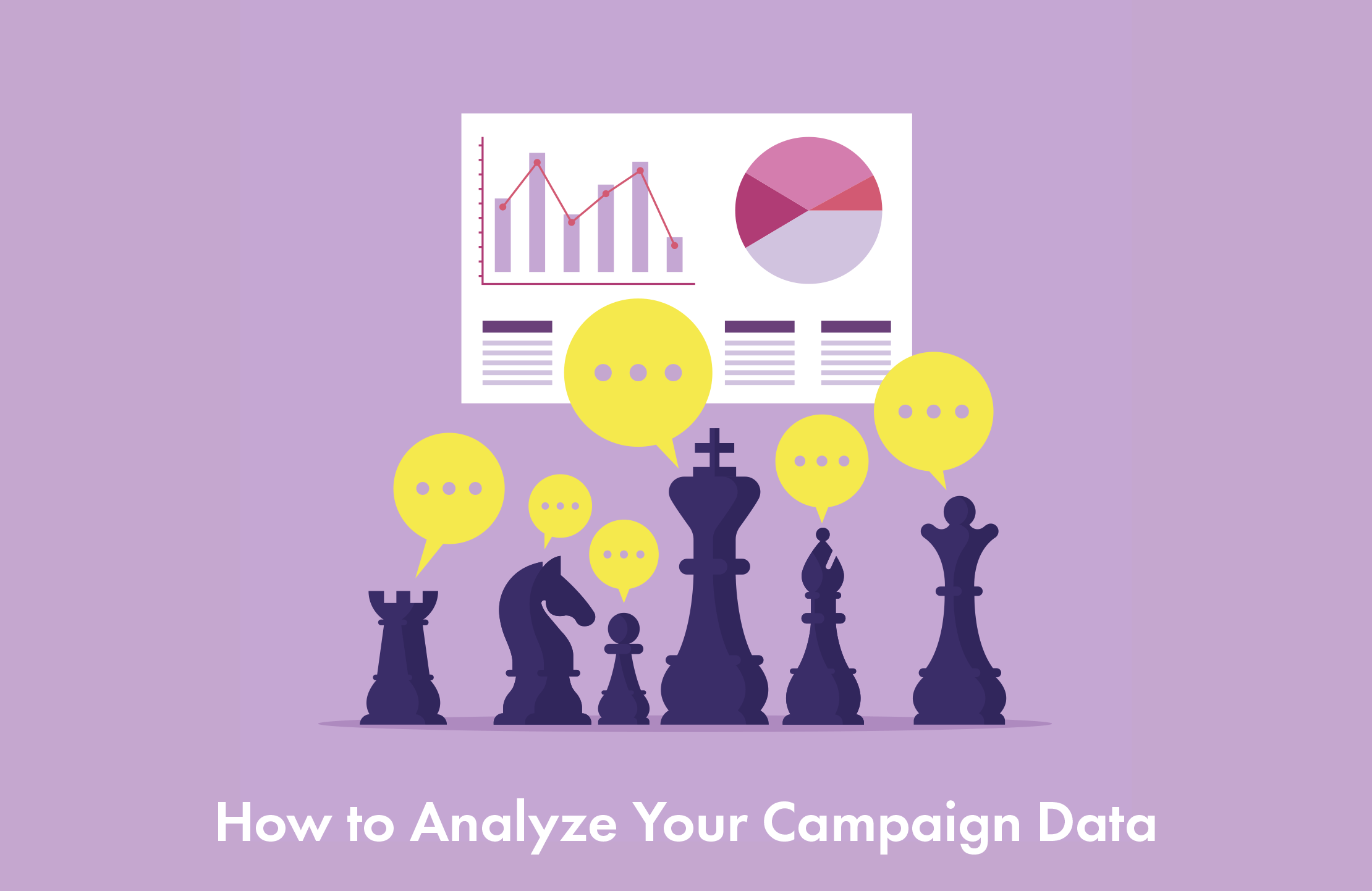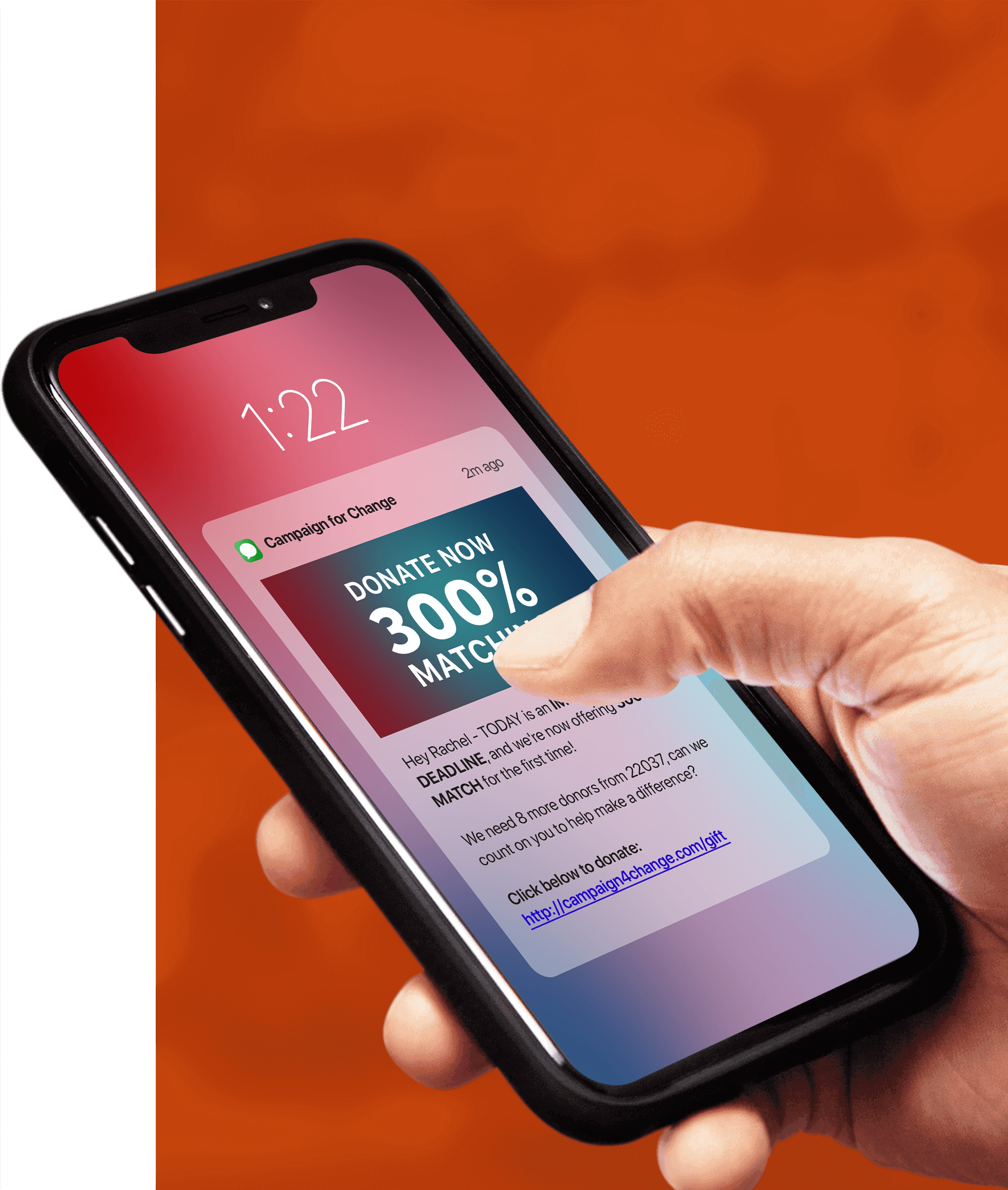
The most effective political campaign managers use data to inform the moves they make. If you have a lot of data for your SMS marketing campaigns and aren’t sure what to do with it, you’ve come to the right place.
This blog post guides you through each feature in a text messaging report. Learn what to look for when analyzing your text message data—including engagement rate, unsubscribe rate, click-through rate, and donations—to create trends that will deliver the results you want.
SMS Engagement Rate
More engagement means more donations, replies, and shares. With SMS marketing, you have a variety of options for crafting engaging text messages, from text-only messages to GIFs, images, audio files, and more. At Tatango, we encourage our clients to use a combination of SMS and MMS (multimedia message service) messages to deliver the most engaging content for their supporters.
In order to boost engagement rates, try using MMS messages. MMS messages allow subject lines, which can pique curiosity and entice subscribers to take action. A subject line with a clear call to action can help increase opens and keeps interest levels high. Examine your subject lines to ensure they’re making recipients curious enough to open and read further. Try featuring action-oriented phrases like:
- “Open to find out…”
- “We don’t want you to miss this…”
- “[First name], we’re counting on you…”
- “You won’t believe this…”
- “Be the first to hear…”
Or, try another SMS marketing strategy that wins engagement: segmentation. With segmentation, text message marketers can design messages for different groups of subscribers, events, locations, or announcements. For example, you could send a video after a fundraising event highlighting the most impactful moments for subscribers who couldn’t attend.
The Tatango Design Studio helps our clients design engaging MMS messages at no extra cost.
Unsubscribe Rate
The unsubscribe section of your text messaging report is one of the most important sections to analyze. Use this section to gauge your audience’s interest level in your messages, and whether you’re sending the right frequency of messages.
For instance, when checking the quality of your messages, ask yourself if your subscribers find your messages engaging and insightful… or bland and unnecessary. If your unsubscribe rate is consistently high, it may indicate that your messages aren’t as relevant as possible. To make your messages more appealing, try segmenting your audience, using merge tags to personalize your messages with first names or cities, or sending messages after breaking news and campaign events.
Keep track of unsubscribe requests as you adjust the number of messages you send. Try not to overwhelm subscribers with multiple messages during the week. Messages should be timely and relevant. When contacting supporters, be mindful of the time of day in subscriber time zones. Keeping all these things in mind will ensure your supporters remain connected.
The truth is, you will lose a small percentage of subscribers with every send. Our data shows that around 3% of subscribers will opt out when your political campaign sends text messages. And that’s totally OK as long as you’re working to add new subscribers. If your list remains the same or is growing, keep sending. If you’re losing subscribers, you might be sending too much, or you might not be adding enough subscribers to make up for losses — or both.
Click-Through Rate
Next, check the click rate. Click rate data shows how effective your call to action is.
Don’t be afraid to tell your subscribers exactly what you want them to do and when you want them to do it. Subscribers want to know how to support you. After all, they believed in your political campaign enough to opt in to your text messages. If you’ve added a link to your message, be sure to tell subscribers what they’ll find at that link. For example, adding a link to a phrase like “Click here for VIP tickets” and “Donate Now” helps capture your supporters’ attention and tells them how and where to support you.
Creating captivating content is one of the most challenging parts of running a successful text message marketing campaign. Taking the ideas for compelling messages from the brainstorming stage and bringing them to life requires skills the average marketer might not have. That’s why Tatango offers our clients access to the Tatango Design Studio at no charge to customers. Our team of experts is ready to help you design messages that keep subscribers engaged and informed. Our experts have more than 14 years of experience supporting the nation’s most successful text message marketing campaigns.
Donations
Finally, let’s explore donation data. In order to determine your donations, we recommend applying this simple formula:
(Total Donations / Message Recipients) * 1000
For example, if you received $100,000 in donations from one text message, sent to a list of 500,000 subscribers, then you received an average of 20 cents for every subscriber on your list. This formula lets you measure how effective your messages were across a huge subset. Then, whether you send to 300 people or you send to 3 million, the data evens out, giving you a clearer picture of which text messages drove the most donations.
To increase your average donation amount, try using the strategies above, such as featuring eye-catching MMS messages, using action-oriented language, providing clear call to actions, customizing your messages, and sending timely texts. You can even include suggested donation amounts in your text messages, such as “Donate $10 now: [link].” This is a specific call to action that guides your supporters and alleviates decision fatigue about how much to donate.
Get Specialized Campaign Data Analysis
The experts at Tatango know what to look for and how to adjust your campaign for ultimate success. Contact your Tatango account representative today for assistance analyzing your message report data and pinpointing areas for growth.

